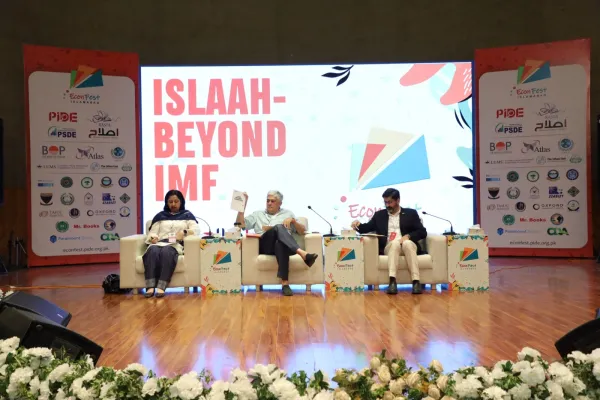i ECONOMY
The fertilizer industry finds itself at a critical juncture. While it initially plays a significant role in enhancing crop productivity, its future potential is now facing challenges, reports WealthPK.Pakistan's growing demand for fertilizer was driven by factors like fertilizer-responsive crop varieties, increased irrigation, and a supportive policy framework. On the supply side, low-cost gas and a favorable investment climate led to the excess manufacturing capacity. However, the recent shortages of gas and monopolistic practices have resulted in underutilization and a greater reliance on imports. In the midst of a challenging year for agriculture, Pakistan grappled with the shortage of fertilizers during the Fiscal Year 2023 due to gas shortages and skyrocketing prices. As the Kharif season dawned, the country witnessed a mixed bag of developments in the fertilizer sector.
Domestic production of urea, a key fertilizer, expanded, bringing a glimmer of hope to the farmers. This expansion led to an improvement in the total availability of urea compared to the previous year. However, the picture was not as rosy for Diammonium Phosphate (DAP), which remained in short supply, a trend that persisted throughout the Rabi season due to lower imports. On the demand side, the scenario was equally varied. Urea offtake declined by 3.7 percent during the Kharif season but rebounded with a 4.5 percent increase during Rabi, compared to the previous year. DAP, on the other hand, faced significant challenges, with offtake declining by a staggering 44.7 percent during Kharif and 23.4 percent during Rabi.
Talking to WealthPK, M Sajjad, Senior Scientific Officer at the Pakistan Agricultural Research Council (PARC), said the primary driver of the lower fertilizer offtake, particularly for DAP, was the unprecedented surge in prices. The international fertilizer prices have been on the rise since the post-pandemic period, culminating in historic highs by June 2022. “While some moderation in the international fertilizer prices was observed at the outset of FY23, largely due to the declining global gas prices and the reopening of fertilizer plants in Europe, the prices remained significantly higher than the pre-pandemic levels. The moderation's impact was further mitigated by depreciation in the Pak Rupee (PKR) against international currencies,” said Sajjad.
In a particularly noteworthy development, urea prices remained elevated throughout the review period due to the high gas tariffs, further compounding the challenges faced by farmers and the agriculture sector at large. “The implications of these fertilizer shortages and high prices for the agricultural sector in Pakistan cannot be understated. Fertilizers are a vital input for crop production, and their scarcity, particularly DAP, can impact crop yields and food security. As Pakistan continues to address the challenges of gas shortages and navigate the global fertilizer market, the government and stakeholders will need to explore strategies to ensure a stable and affordable supply of fertilizers for farmers in the years to come,” according to the official.
Credit: Independent News Pakistan (INP)









